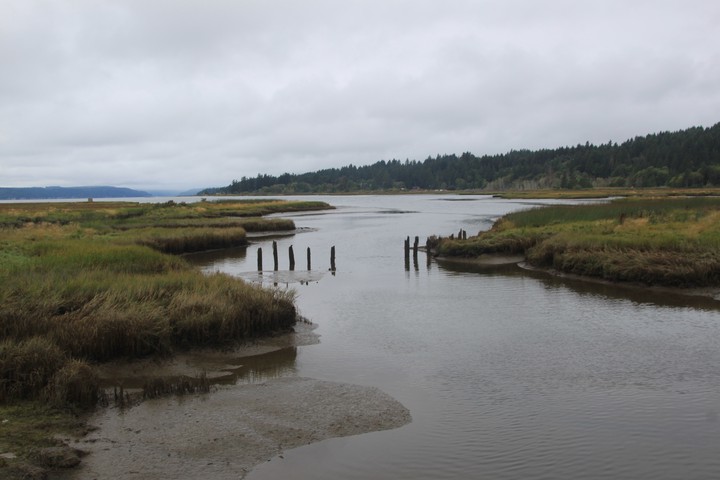Seasonal changes in the drivers of water chemistry variability of a small freshwater tidal river

Abstract
Where rivers meet the sea, tides can exert a physical and chemical influence on the lower reaches of a river. How tidal dynamics in these tidal river reaches interact with upstream hydrological drivers such as storm rainfall, which ultimately determines the quantity and composition of material transferred from watersheds to estuaries, is currently unknown. We monitored a small freshwater tidal river in the Pacific Northwest, USA in high resolution over one year to evaluate the relative importance of tides versus upstream hydrological flows (i.e., base flow and precipitation events) on basic physico-chemical parameters (pH, dissolved oxygen, turbidity, specific conductivity, and temperature), and how these interactions relate to the downstream estuary. Tidal variability and diurnal cycles (i.e. solar radiation) dominated water physico-chemical variability in the summer, but the influence of these drivers was overshadowed by storm-driven sharp pulses in river physico-chemistry during the remainder of the year. Within such events, we found incidences of counterclockwise hysteresis of pH, counterclockwise hysteresis of dissolved oxygen, and clockwise hysteresis of turbidity, although systematic trends were not observed across events. The dominance of storm rainfall in the river’s physico-chemistry dynamics, and similar pulses of decreased pH observed in adjacent estuarine waters, suggest that the linkage between tidal streams and the broader system is variable throughout the year. High-frequency monitoring of tidal river biogeochemistry is therefore crucial to enable the assessment of how the relative strength of these drivers may change with future sea level rise and altered precipitation patterns to modulate biogeochemical dynamics across the land-ocean-atmosphere continuum.